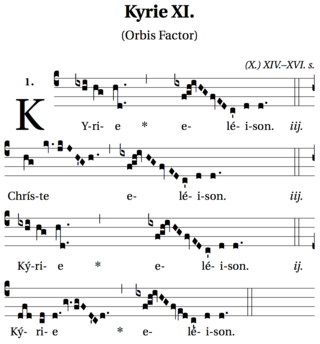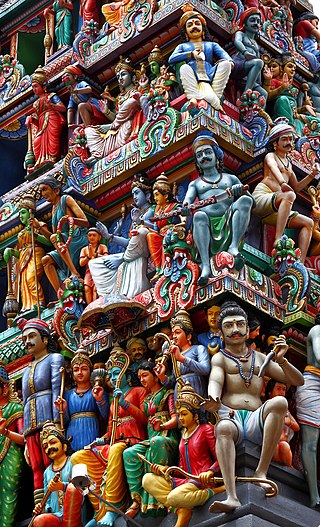This biography of a living person includes a list of general references, but it lacks sufficient corresponding inline citations .(May 2012) |
Steven J. Schloeder is a theologian, architect, and author.
This biography of a living person includes a list of general references, but it lacks sufficient corresponding inline citations .(May 2012) |
Steven J. Schloeder is a theologian, architect, and author.
Steven Joseph Schloeder received the bachelor of architecture cum laude from Arizona State University. [ citation needed ]
After acquiring professional registration in the State of Arizona, Schloeder received the Rotary International Graduate Scholarship and completed the Master in Architecture degree at the University of Bath, studying under Prof. Michael Brawne. His thesis, The Architecture of the Vatican Two Church, [1] established a theory of sacramental architecture in criticism and rejection of the tenets of architectural modernism, proposing a metalanguage of sacred architecture which participates in the formal structure of the human body, the tent/ house/ temple, and the city. The thesis was published as Architecture in Communion [2] by Ignatius Press, San Francisco, 1998.
Schloeder received the Presidential Fellowship at the Graduate Theological Union in Berkeley, CA, where he attained the Ph.D. in theology, working under Rev. Dr. Michael Morris, OP. His dissertation, The Church of the Year 2000: A dialogue on Catholic Architecture for the Third Millennium, [3] critically examined the architectural competition for the Jubilee Church and the works of Richard Meier, Tadao Ando, Peter Eisenman, Günter Behnisch, Santiago Calatrava, and Frank Gehry.
Schloeder is a licensed architect (Arizona, Pennsylvania), practicing nationally in the United States in all aspects of Roman Catholic sacred architecture, through his firm Liturgical Environs, PC. He currently works for the Pennsylvania Department of General Services.

Mass is the main Eucharistic liturgical service in many forms of Western Christianity. The term Mass is commonly used in the Catholic Church, Western Rite Orthodoxy, Old Catholicism, and Independent Catholicism. The term is also used in some Lutheran churches, as well as in some Anglican churches, and on rare occasion by other Protestant churches.

The Mass of Paul VI, also known as the Ordinary Form or Novus Ordo, is the most commonly used liturgy in the Catholic Church. It was promulgated by Pope Paul VI in 1969 and its liturgical books were published in 1970; those books were then revised in 1975, they were revised again by Pope John Paul II in 2000, and a third revision was published in 2002.
This is an index page of Wikipedia articles related to the topic of religion.

Kyrie, a transliteration of Greek Κύριε, vocative case of Κύριος (Kyrios), is a common name of an important prayer of Christian liturgy, also called the Kyrie eleison.

In Christianity, worship is the act of attributing reverent honour and homage to God. In the New Testament, various words are used to refer to the term worship. One is proskuneo which means to bow down to God or kings.
The Liturgical Movement was a 19th-century and 20th-century movement of scholarship for the reform of worship. It began in the Catholic Church and spread to many other Christian churches including the Anglican Communion, Lutheran and some other Protestant churches.

Sacral architecture is a religious architectural practice concerned with the design and construction of places of worship or sacred or intentional space, such as churches, mosques, stupas, synagogues, and temples. Many cultures devoted considerable resources to their sacred architecture and places of worship. Religious and sacred spaces are amongst the most impressive and permanent monolithic buildings created by humanity. Conversely, sacred architecture as a locale for meta-intimacy may also be non-monolithic, ephemeral and intensely private, personal and non-public.

Catholic liturgy means the whole complex of official liturgical worship, including all the rites, ceremonies, prayers, and sacraments of the Church, as opposed to private devotions. In this sense the arrangement of all these services in certain set forms is meant. Liturgy encompasses the entire service: prayer, reading and proclamation, singing, gestures, movement and vestments, liturgical colours, symbols and symbolic actions, the administration of sacraments and sacramentals.

The Mass is the central liturgical service of the Eucharist in the Catholic Church, in which bread and wine are consecrated and become the body and blood of Christ. As defined by the Church at the Council of Trent, in the Mass "the same Christ who offered himself once in a bloody manner on the altar of the cross, is present and offered in an unbloody manner". The Church describes the Mass as the "source and summit of the Christian life", and teaches that the Mass is a sacrifice, in which the sacramental bread and wine, through consecration by an ordained priest, become the sacrificial body, blood, soul, and divinity of Christ as the sacrifice on Calvary made truly present once again on the altar. The Catholic Church permits only baptised members in the state of grace to receive Christ in the Eucharist.

Catholic devotions are particular customs, rituals, and practices of worship of God or honour of the saints which are in addition to the liturgy of the Catholic Church. The United States Conference of Catholic Bishops describes devotions as "expressions of love and fidelity that arise from the intersection of one's own faith, culture and the Gospel of Jesus Christ". Devotions are not considered part of liturgical worship, even if they are performed in a church or led by a priest, but rather they are paraliturgical. The Congregation for Divine Worship at the Vatican publishes a Directory on Popular Piety and the Liturgy.

Popular piety in Christianity is an expression of faith which avails of certain cultural elements proper to a specific environment which is capable of interpreting and questioning in a lively and effective manner the sensibilities of those who live in that same environment. Its forms in the Roman Catholic Church are explained in the Directory on Popular piety and the liturgy issued by the Congregation for Divine Worship and the Discipline of the Sacraments of the Catholic Church. In the Lutheran Churches, popular piety is expressed through the reception of the sacraments, the displaying of sacred art, the signing of hymnody, prayer, Bible study and devotions.
Louis Bouyer, was a French Catholic priest and former Lutheran minister who was received into the Catholic Church in 1939. During his religious career he was an influential theological thinker, especially in the fields of history, liturgy and spirituality, and as peritus helped shape the vision of the Second Vatican Council. He was a member of the Oratory of Jesus.
Mediator Dei is a papal encyclical issued by Pope Pius XII on 20 November 1947. It was the first encyclical devoted entirely to liturgy.

There are seven sacraments of the Catholic Church, which according to Catholic theology were instituted by Jesus Christ and entrusted to the Church. Sacraments are visible rites seen as signs and efficacious channels of the grace of God to all those who receive them with the proper disposition.
A particular church is an ecclesiastical community of followers headed by a bishop, as defined by Catholic canon law and ecclesiology. A liturgical rite, a collection of liturgies descending from shared historic or regional context, depends on the particular church the bishop belongs to. Thus the term "particular church" refers to an institution, and "liturgical rite" to its ritual practices.
In the Catholic Church, communicatio in sacris, also called communicatio in divinis or communicatio in ritibus, designates the regulations for the partaking of a Catholic person to a non-Catholic sacrament or liturgical celebration, or for the partaking of a non-Catholic person to a Catholic sacrament or liturgical celebration. The expression is also used to refer to said acts of partaking themselves.
Hans Ansgar Reinhold (1897–1968) was a Roman Catholic priest born in Hamburg, Germany. Reinhold took part in the Roman Catholic resistance to the Nazi regime until taking refuge in the United States. He was a prominent liturgical reformer whose work was influential in shaping the changes to the Mass made at the Second Vatican Council. Reinhold was also a prominent advocate for the introduction of modernist architectural ideas to the construction of Catholic churches in the United States.
Martha L. Moore-Keish is an American theologian ordained in the Presbyterian Church (U.S.A.). Her work is primarily focused on Reformed theology, liturgical theology and ecumenical theology, including engagement with interfaith issues around the world. She currently engages this work as the J.B. Green Associate Professor of Theology at Columbia Theological Seminary.

Peter John Elliott is a retired Australian bishop of the Catholic Church who served as an auxiliary bishop of the Archdiocese of Melbourne from 2007 to 2018. He is also an author, writing a number of published works that predominantly concern the celebration of Catholic liturgy.
The Eastern Catholic Churches of the Catholic Church utilize liturgies originating in Eastern Christianity, distinguishing them from the majority of Catholic liturgies which are celebrated according to the Latin liturgical rites of the Latin Church. While some of these sui iuris churches use the same liturgical ritual families as other Eastern Catholic churches and Eastern churches not in full communion with Rome, each church retains the right to institute its own canonical norms, liturgical books, and practices for the ritual celebration of the Eucharist, other sacraments, and canonical hours.